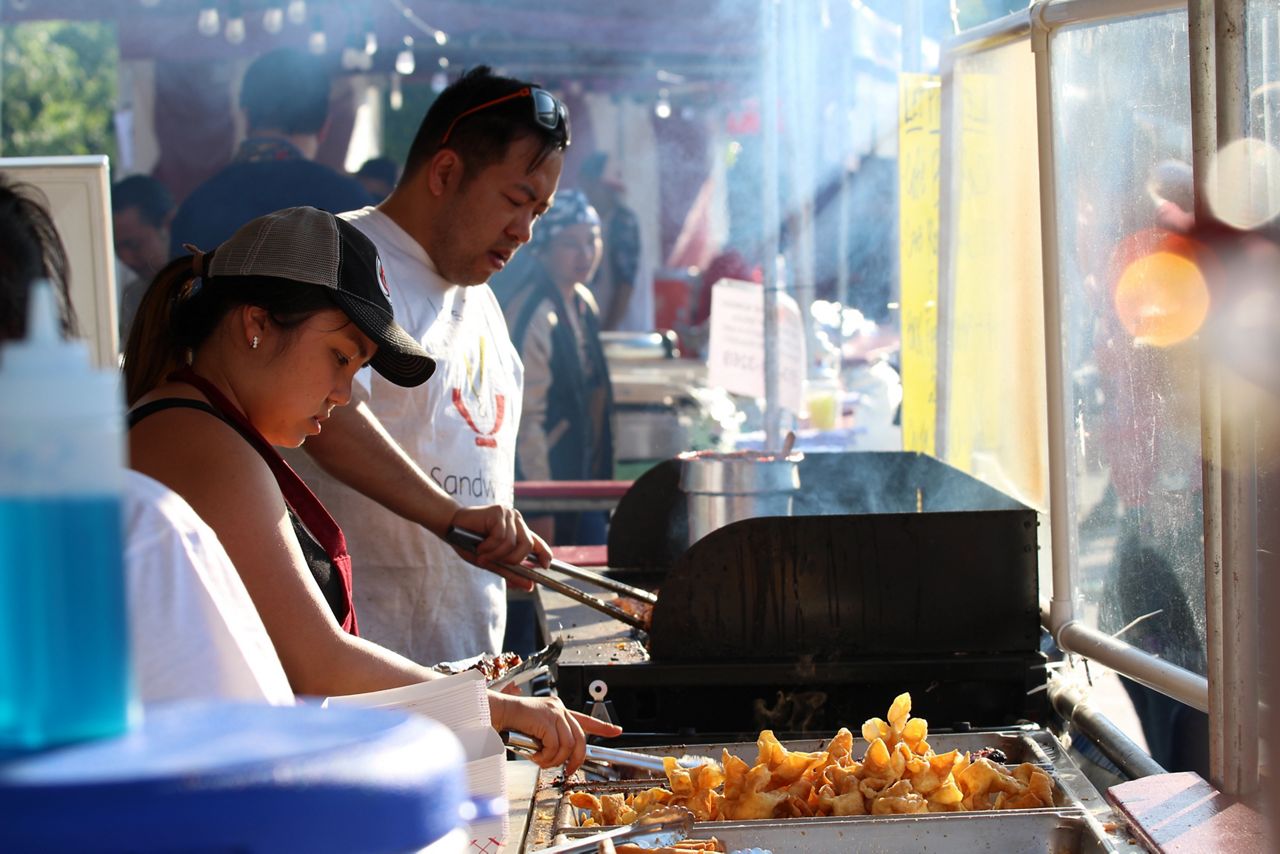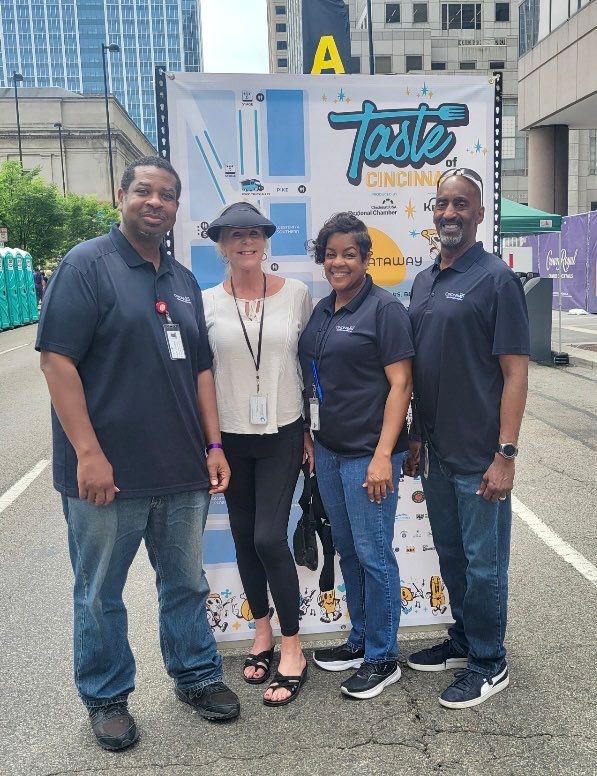CINCINNATI — Taste of Cincinnati is one of the year’s biggest events for dozens of restaurants, food trucks and vendors across southwest Ohio. But the Memorial Day weekend tradition is just as important for the Cincinnati Health Department.
The department’s small but mighty environmental health team regularly checks the temporary tent-like setups of each vendor taking part in the culinary festival. This year, there were 84. The inspectors' sole goal has been to ensure each of the more than 300 dishes on this weekend’s menu is safe to eat.
What You Need To Know
- Cincinnati health inspectors spend Memorial Day weekend working to ensure the Taste of Cincinnati is safe for eaters
- The job includes checking serving temperatures, booth layout and refrigeration systems to ensure things are up to code
- Since 1979, there's not been one food-borne illness related to the Taste of Cincinnati, per CHD
- Planning for the Taste of Cincinnati is a year-round process that involves several city departments, businesses and local organizations
Throughout the last three days, the health department staff was on-site, ensuring compliance with rules for equipment like handwashing stations and refrigeration units. They also made sure each individual food item was prepared safely and served at the right temperature.
“We’re working throughout the weekend to make sure this is not only a fun but safe event for everyone involved,” said Antonio Young, director of environmental health for CHD.
Young described environmental health as the “licensing and permit arm” of his department. They handle a lot of different areas — from swimming pool safety to rabies investigations to testing for West Nile virus in the community. But one of its biggest jobs is food service inspection.
Throughout the year, the food safety team works with restaurants, grocery stores, vending facilities and food trucks. But in the spring and summer, they spend a lot of time working at special events like church festivals and block parties.

For food trucks, working events like Taste aren’t usually a big deal, Young said. But traditional restaurants and aspiring food service operators require a temporary license to show they can safely prepare and serve food outdoors.
The first thing inspectors look for is that the booth is fully covered, especially the preparation areas, Young added. They also make sure food, cooking equipment, serving containers and utensils are at least six inches off the ground.
Most vendors use a five-gallon container with a spigot, soap, warm water and paper towels for mandatory handwashing, Young said. They use their required three-compartment sink to wash, rinse and sanitize their cooking equipment.
A vital part of the health inspectors’ job is ensuring any food items that get served stay out of temperature “danger zones,” he said. For items that need to be kept cold, that’s 41 degrees or lower.
“We require them to keep a thermometer inside the units so we can look in and easily see the temperature,” Young added. He said they use a probe thermometer to check the individual food items during inspections.
Vendors need to prove they can keep hot foods at a holding temperature of at least 135 degrees, Young said. But they also check items that must meet specific cooking temperatures. Chicken, for instance, needs to be cooked to at least 165 degrees to get rid of any such bacteria, such as salmonella.
Ten of CHD's 14 food inspectors worked this weekend. They split into two shifts every day. Each inspector was given a designated list of booths to check in with throughout their shift.
“With an enormous event like this, we need to be extra vigilant,” Young said.
The environmental health team has worked every Taste of Cincinnati, dating back to the inaugural event on Garfield Place in 1979.
Because of those efforts, there hasn’t been on food-borne illness. No cases of salmonella, listeria monocytogenes, campylobacter or anything else, per CHD.
“We must be doing a good job,” Young said with a laugh.
Preparing for the Taste of Cincinnati is a year-round process, said Chelsea York, one of the chief organizers of the event. York is vice president of events and experiences for the Cincinnati USA Regional Chamber. The Chamber is the longtime operator of the event.
“Pretty much as soon as the event wraps up on Monday night, we’ll get started thinking about next year,” York said.

Event planning is bigger than just finding restaurants and more than three-dozen musical acts to fill out the event roster. The event requires various permits and collaboration between a broad cross-section of organizations.
York referred to Taste of Cincinnati preparations as a “citywide effort.” It involves Metro and the business community and several city departments.
The Cincinnati Fire Department checks electrical systems and potential fire hazards. They also work with the Cincinnati Police Department for crowd control. The Department of Public Services, York said, which helps with food waste disposal.
York noted the Cincinnati Health Department is key to holding a “safe and world-class event.”
Besides its vendor inspections, the health department team also does what it calls sewer baiting. That’s a process to keep any unwanted “furry friends” from making unexpected appearances, Young said.
“It’s something we do every springtime when rats are breeding,” he added. “We try to time it right before the Taste so our visitors from out of town don’t have an unexpected wildlife joining them while they’re downtown.”
In the weeks leading up to the event, the health department starts its work with the restaurants and food trucks. Beyond making sure all permits are in order, they also attend a mandatory vendor meeting to go over the setup process and answer questions.
With a more than 40-year history, many of the Taste vendors are festival veterans at this point, Young said. But there are new businesses every year, and they want to be there for them to help them find success.
If the environmental health team notices any “red flags” with a vendor, Young said they’d continue to check back with them leading up to the Taste. They’ll give them a little extra attention during the event as well, he said, just to ensure they’ve got things figured out.
“I think the operators and the guests appreciate it,” Young added.



